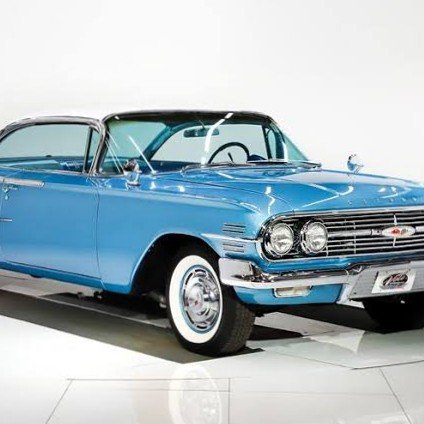Car insurance is a critical aspect of vehicle ownership in the United States. This comprehensive guide aims to provide an in-depth understanding of car insurance, its importance, various coverage options, and factors influencing premiums. Whether you’re a new driver or an experienced one, this article will help you navigate the complex world of car insurance.
What is Car Insurance?
Car insurance is a contract between the vehicle owner and an insurance company. The owner pays a premium, and in return, the insurance company provides financial protection against losses or damages resulting from accidents, theft, and other incidents. Car insurance is mandatory in almost every state, ensuring that drivers can cover the costs associated with vehicle accidents and damages.
The Importance of Car Insurance
- Legal Requirement: Almost all states in the USA require drivers to have a minimum level of car insurance. Driving without insurance can lead to hefty fines, license suspension, and even legal action.
- Financial Protection: Car insurance provides financial coverage for repairs, medical expenses, and legal fees. This protection can save drivers from significant out-of-pocket expenses.
- Liability Coverage: In case of an accident where the driver is at fault, liability coverage helps pay for the other party’s medical bills and property damage.
- Peace of Mind: Knowing that you are covered in the event of an accident or theft provides peace of mind, allowing you to drive with confidence.
Types of Car Insurance Coverage
Car insurance policies in the USA offer various types of coverage, each serving a different purpose:
- Liability Insurance: This is the most basic and mandatory coverage in most states. It includes:
- Bodily Injury Liability: Covers medical expenses, lost wages, and legal fees for injuries caused to others.
- Property Damage Liability: Covers the cost of damages to another person’s property.
- Collision Coverage: Pays for damages to your vehicle resulting from a collision, regardless of who is at fault. This coverage is particularly beneficial for newer or more expensive cars.
- Comprehensive Coverage: Covers non-collision-related damages, such as theft, vandalism, natural disasters, and hitting an animal.
- Personal Injury Protection (PIP): Covers medical expenses, lost wages, and other related costs for the policyholder and passengers, regardless of fault.
- Uninsured/Underinsured Motorist Coverage: Protects you if you’re involved in an accident with a driver who has no insurance or insufficient insurance.
- Medical Payments Coverage (MedPay): Similar to PIP, it covers medical expenses for you and your passengers after an accident.
Factors Affecting Car Insurance Premiums
Several factors influence the cost of car insurance premiums:
- Driving Record: Drivers with a clean record typically pay less than those with a history of accidents or traffic violations.
- Age and Experience: Younger, less experienced drivers usually face higher premiums due to the higher risk of accidents.
- Vehicle Type: The make, model, and age of the vehicle can affect the premium. Expensive cars or those with high repair costs may result in higher premiums.
- Location: Urban areas with higher traffic density and crime rates often have higher insurance rates compared to rural areas.
- Coverage Levels: Higher coverage limits and additional coverage options will increase the premium.
- Credit Score: In some states, insurance companies use credit scores to determine premiums. A higher credit score can result in lower rates.
- Usage: The amount of driving you do can impact your premium. More miles driven generally increase the risk of accidents.
Tips to Lower Car Insurance Costs
- Compare Quotes: Shop around and compare quotes from different insurance providers to find the best deal.
- Bundle Policies: Many insurers offer discounts if you bundle multiple policies, such as home and auto insurance.
- Maintain a Clean Driving Record: Avoid accidents and traffic violations to qualify for lower premiums.
- Increase Deductibles: Opting for a higher deductible can lower your premium, but be sure you can afford the out-of-pocket cost in case of a claim.
- Take Advantage of Discounts: Many insurers offer discounts for good students, safe drivers, and members of certain organizations.
- Review Coverage Regularly: Periodically review your coverage to ensure it meets your needs without overpaying for unnecessary options.
Understanding the Claims Process
In the event of an accident, filing a claim is the process of seeking compensation from your insurance company. Here’s a brief overview:
- Report the Accident: Contact your insurance company as soon as possible after the accident.
- Provide Documentation: Submit necessary documents, such as the police report, photos of the accident scene, and details of the incident.
- Assessment: An adjuster will assess the damage to determine the compensation amount.
- Receive Compensation: Once the claim is approved, you’ll receive the payment for repairs and other covered expenses.
The Future of Car Insurance
The car insurance industry is evolving with technological advancements. Here are a few trends shaping the future:
- Telematics: Usage-based insurance (UBI) programs use telematics devices to monitor driving behavior, offering personalized premiums based on actual driving habits.
- Autonomous Vehicles: As self-driving cars become more common, insurance models will shift to focus on software and manufacturer liability.
- Digital Platforms: Insurers are increasingly using digital tools and platforms to streamline the policy purchase and claims process, enhancing customer experience.
- Environmental Impact: Electric vehicles and eco-friendly practices are influencing insurance policies and discounts.
Conclusion
Car insurance is a vital aspect of vehicle ownership in the USA, providing essential financial protection and peace of mind. Understanding the different types of coverage, factors affecting premiums, and the claims process can help you make informed decisions. By staying informed and proactive, you can find the best car insurance policy to meet your needs and budget.

